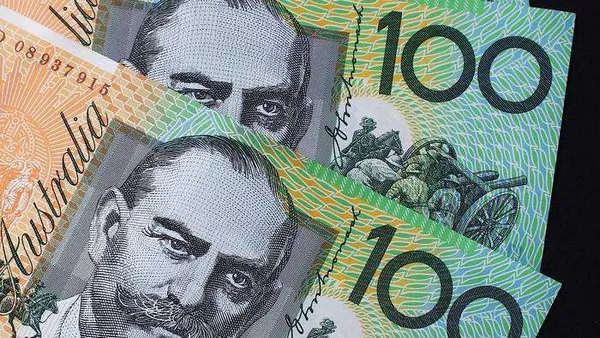Forex trading convergence area refers to a chart area where multiple forms show the same direction.
Form helps investors predict the future price trend, by technical analysis investors sought after.
Since the early days of the U.S. stock market, traders have noticed similar patterns in prices before big gains or losses.
In today’s parlance, markets “gather energy” before sustaining or reversing a trend.
In this article, we will share the definition of price convergence area and how to use it.
Support resistance – Key currency pairs that find a price convergence zone conform to two forms of support and resistance: the classical form and the dynamic form.
The classical form refers to the form of support or resistance at the horizontal level.
For example, consider a double or triple top and bottom as the most typical form of typical support and resistance.
Dynamic forms, on the other hand, are more powerful.
Because we can use it to track price action, dynamic support and resistance levels are more important in the eyes of technical traders.
In forex trading, however, the balance of power shifts when support and resistance combine with other forms to form convergence zones.
The problem with most technical analysis concepts is that they lack practical examples.
We will try to illustrate the importance of convergence zones in forex trading by using as many examples as possible.
For example, the chart below shows one of the strongest and famous reversals in recent years.
Usd/JPY surged after the US election showed Donald Trump as the winner.
The market broke up in an almost straight line.
After initial disappointment, the dollar surged as investors scrutinized Trump’s presidential agenda.
What’s interesting is the area where it bounces.
Watch carefully because it shows a basic convergence of FX trading features.
First of all, it took more than four months.
In other words, there is no reason to miss the price action and the potential reversal that develops here.
Second, remember that the convergence zone of FX trading is not just given by trend lines and channels.
Instead, these zones form when you find it hard for prices to go up or down for any reason.
The first thing to notice is the formation of a triple bottom in the highlighted area.
Currency traders have a saying: “Triple tops and triple bottoms rarely hold.”
As you can imagine, the triple bottom/top deserves our attention.
The original concept of a triple bottom required prices to hover at the same level.
However, this is extremely difficult in today’s forex trading as high volatility levels and five-figure quotes make it impossible to maintain this performance.
As mentioned earlier, the convergence zone of forex trading has multiple factors pointing in the same direction.
In this case, the first thing to notice is the triple bottom.
Traders familiar with the concept of a triangle pattern are quick to notice this pattern.
As a reminder, in a triangle pattern, the market forms a series of lower highs or higher lows until it finally breaks out.
In this case, the triangle will become easier to identify by simply connecting the triple bottom and highlighting the lower high points.
The resulting trend lines fuse, showing a nice shrinking triangle as a reversal pattern.
As shown below, two reverse patterns form in the same region.
So bulls have had plenty of time to prepare for a trend reversal.
What is the best trading strategy in this situation?
We should wait for the upper part of the triangle to break.
The so-called “b-d trendline” marks the end of the triangular formation.
This is particularly important for the USD/JPY performance above, as the break in the b-d trendline came after the market formed a triple bottom.
Price convergence in forex trading reinforces trading decisions.
Thus, the moment the price breaks above the b-d trend line, not only does the trader have a signal to go long, but the market also signals a bullish (up) trend.
Based on the two modes, the steps of price integration are as follows: Wait for the price to break through the b-d trend line;
Set a stop on the last pull of the triple bottom pattern;
Setting a minimum risk-reward ratio of 1:3 is very important;
It is also possible to set the stop loss price at 75% of the longest side of the longest triangle of the trade convergence area (75% between a and b in the figure).
More importantly for these converging areas of currency trading, they actually reflect fundamentals.
Because the break in the b-d trend line occurred before the US election, many thought that other candidates would win.
However, the risk aversion associated with the possibility of a Trump victory quickly dissipated, making room for strong gains.
Downside risk on USD/JPY has broken and then moved higher as market participants realized its upside potential.
The combination of psychological price and convergence area can not only take the classical support and resistance level as the basis to judge the price trend, but also have a positive effect on the influence of psychological price on the trend in foreign exchange trading.
Since human nature tends to enter or exit at round numbers, we should try to look for round prices as a reference for trading.
In this example, the 100 level proved to be strong support for USD/JPY.
Before FP(non-farm payrolls), the market needs time to consolidate.
But markets also consolidate ahead of major political events such as the US election.
Again, in the case of the last presidential election, no trader was willing to take a chance on the dollar over the summer.
Everyone is focused on the polls and how Mrs Clinton or Mr Trump is doing.
Any sign that Mrs Clinton was going to win the election turned out to be about taking risks.
More precisely, risk on sentiment will be supported and USDJPY will rise accordingly.
(Note: The consensus was that a Clinton win would spark a broader market rally.
A Trump victory would trigger increased risk aversion.)
Thus, breaking the b-d trend line is a fundamental response to risk moves.
In forex trading, the area of convergence that combines technology and fundamentals is definitely worth looking at.
In fact, traders try to find commonalities between the two.
Summary Fusion regional trades are for traders who like to plan their trades carefully.
They often look for more than one factor to confirm their view of the market.
The above introduces a typical method of finding fusion area for your reference.
When making trading decisions, we should try our best to find the commonalities among various models and make correct trading decisions when they are integrated, so as to improve the success rate.


























